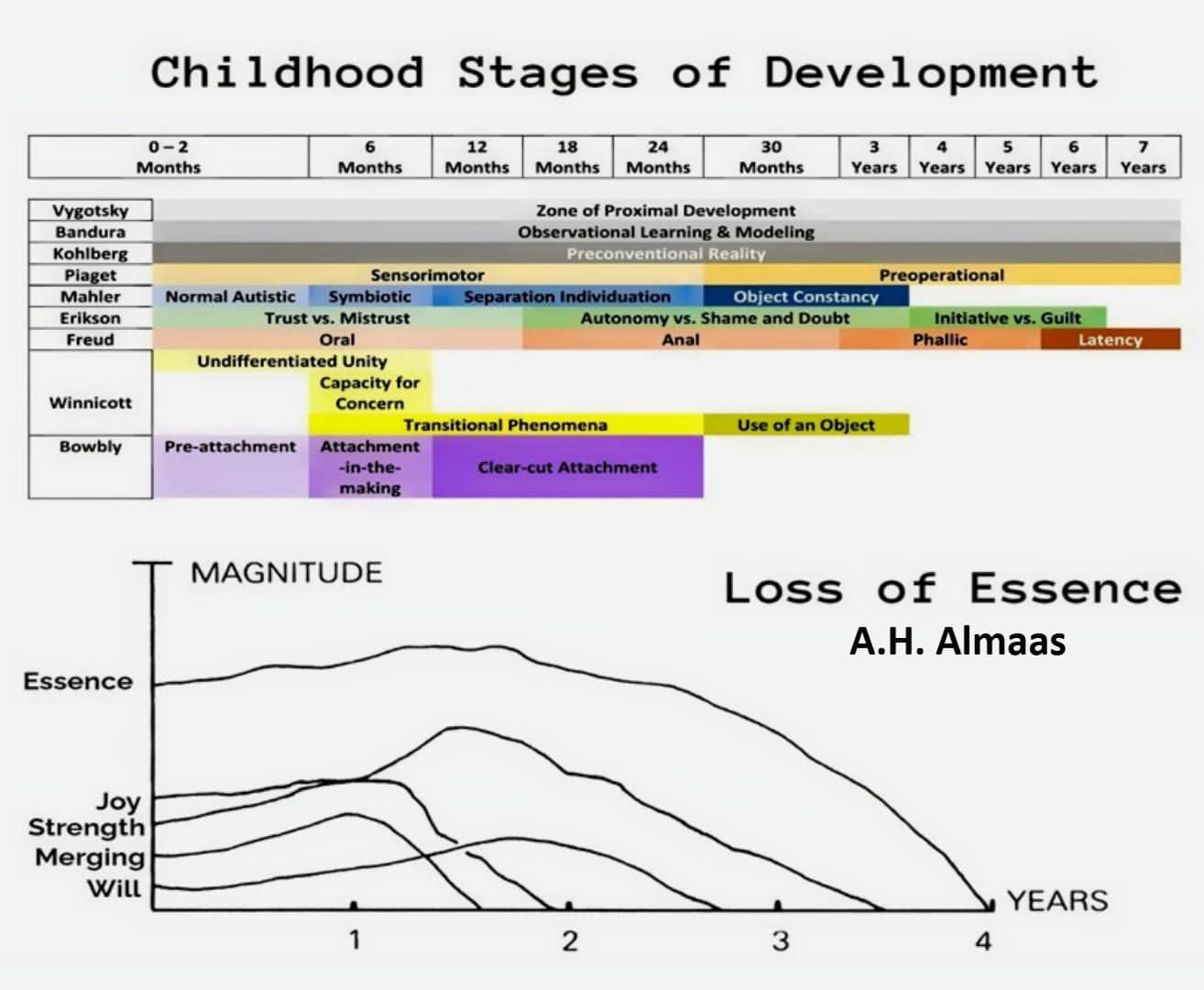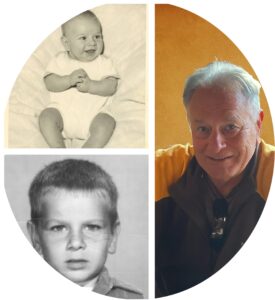What unfolds in these pages is a map of two stories: the visible growth of the child through developmental stages, and the quieter, often hidden arc of essence—the joy, strength, will, and presence that form the child’s deepest nature.
As you enter these pages, may you read not only with your mind but with your heart. May you discover a deeper way of seeing your child and yourself. And may this book remind you, again and again, that the quiet spark behind the eyes of every child is not something to perfect, but something to honor.
—Mary Filice, PhD (Dr. Mary)
Co-Founder, The Attuned Parent Project
A Compass for Essential Parenting
Combining Developmental Psychology With Essence-Based Understanding
This book explores typical childhood development through the lens of essence and the child’s unfolding sense of self. I offer this work as a contemplative and developmental map, a way of seeing how essence weaves through the emergence of personality in early life.
This book is not a manual. It’s not a list of parenting strategies or best practices. Nurturing Essence is something different. It’s a way of seeing your child, yourself, and the sacred unfolding that happens between you. It’s about understanding development not just through milestones and behavior, but through the deeper movements of the soul. – John Harper
Childhood Stages of Development
The graph below tells a story in two parts:
- Above, a detailed map of developmental stages charts the intricate architecture of personality formation across the first seven years.
- Below, a different story unfolds—the gradual fading from consciousness of connection to essence, what the child arrives with before ego and personality development. The child’s awareness of essence dims while the complex scaffolding of selfhood assembles itself.
This is where parents come in. The invitation is to support both movements. Yes, children need to build a personality, learn to name things, and understand boundaries. But they also need help staying connected to what was there before all of that, to the part of them that doesn’t need to be earned or proven.
To nurture essence is not to bypass development. It is development. It is what allows the child to grow into a self that is both functional and deeply real.

This graph offers several windows into childhood development, each from a different perspective:
- Across the top, childhood development pioneers map their distinct frameworks.
- Looking vertically from any particular age point, you can see how multiple theories overlap, indicating that a child is simultaneously developing capacities and functioning.
- The bottom half introduces a different perspective: A. H. Almaas’ view of the child’s connection to essence—qualities such as joy, will, strength, and merging—diminishing in magnitude as ego structures develop.
Read together, the chart reveals both the richness and the fragmentation of early life: psychological theories chart the formation of identity, while Almaas highlights the parallel loss of direct contact with being.
The power of this composite view is in its capacity to show how, at each age, development is not just linear growth but also a shift away from essential presence—development and loss occurring hand in hand.
Essential Parenting
When you understand both the development and essence of your child, you begin to see them not just as someone to shape or guide but as a being to meet. A mystery to welcome. A soul finding its way into this world, through your love, your attunement, and your willingness to be changed in the process.
Table of Contents
SECTION 1: The Foundation and Broadstrokes
Chapter 1: The Developing Child—A Multifaceted View
Chapter 2: The Council of Nine Theorists
Chapter 3: The Developing Self in Childhood
Chapter 4: The Dance of Learning
Chapter 5: The Social Mirror
Chapter 6: Language and Labels
Chapter 7: The Authority of Culture
SECTION 2: The Essential Journey
Chapter 8: Essence and Ego
Chapter 9: Understanding Essence
Chapter 10: Inherent Wholeness—The Unsculpted Self
Chapter 11: Emergence of the Individual
Chapter 12: Learning Through Joyful Expression
Chapter 13: Preserving the Spark
SECTION 3: The Developmental Lens
Chapter 14: Birth to 6 Months
Chapter 15: 6 to 12 Months
Chapter 16: 12 to 18 Months
Chapter 17: 18 to 24 Months
Chapter 18: 24 to 30 Months
Chapter 19: 30 to 36 Months
SECTION 4: Essential Qualities
Chapter 20: Merging Gold Essence
Chapter 21: Essential Strength
Chapter 22: Essential Will
Chapter 23: Essential Joy
Chapter 24: Value, Peace, Space, and Nourishment
Chapter 25: When Essence Becomes Holes
Chapter 26: The Integrated Child
Chapter 27: When Development Becomes Emergence
About the Author

John Harper is a Diamond Approach® teacher, Enneagram guide, and a student of human development whose work bridges psychology, spirituality, and deep experiential inquiry. Drawing from both scientific research and contemplative wisdom traditions, John helps families discover the profound connection that emerges when we honor both a child’s developmental needs and their essential nature.
He is the author of The Enneagram World of the Child: Nurturing Resilience and Self-Compassion in Early Life and Good Vibrations: Primordial Sounds of Existence, available on Amazon.

